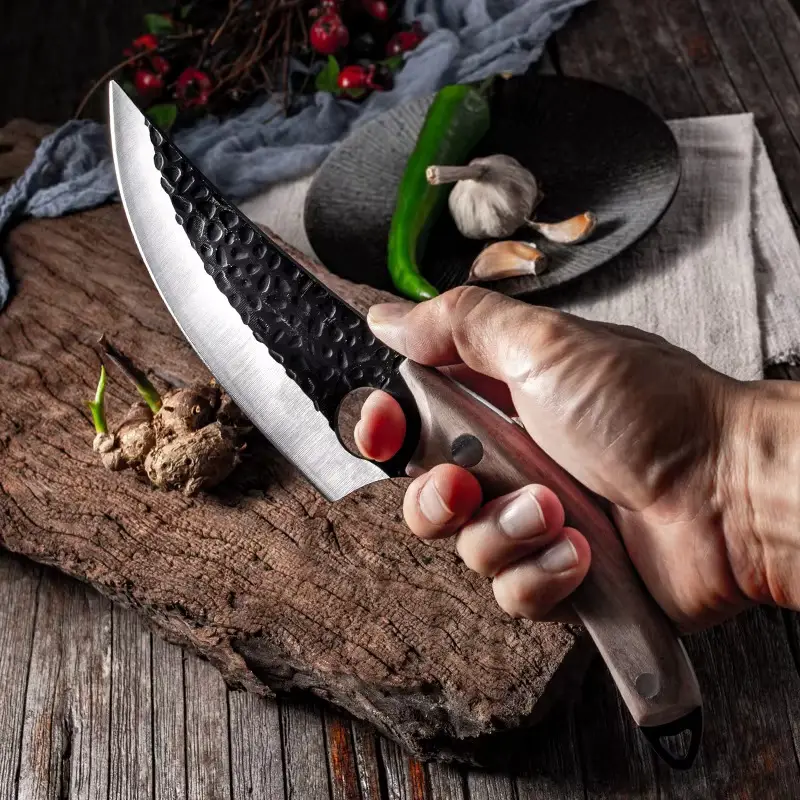In today’s fast-paced world, preparing meals that are both nutritious and time-efficient can be a challenge. Enter the Beef and Vegetable Skillet, a one-pan dish that perfectly balances the rich flavors of beef with the vibrant tastes of mixed vegetables and herbs. This dish not only saves time on cooking and cleanup but also provides a wholesome, well-rounded meal. Whether you’re a busy professional, a parent juggling multiple tasks, or just someone who loves a good meal, this recipe is a game-changer. Let’s dive into the magic of this skillet sensation!
Ingredients
Before you begin cooking, ensure you have all the necessary ingredients on hand. Here’s what you’ll need:
- 1 pound of ground beef (preferably lean)
- 2 tablespoons of olive oil
- 1 medium onion, chopped
- 2 cloves of garlic, minced
- 1 bell pepper, chopped (any color of your choice)
- 1 zucchini, sliced
- 1 cup of broccoli florets
- 1 cup of cherry tomatoes, halved
- 1 teaspoon of dried oregano
- 1 teaspoon of dried thyme
- Salt and pepper to taste
- 1 tablespoon of soy sauce (optional)
- Fresh parsley, chopped for garnish
Instructions
Creating this delicious dish is simple and straightforward. Follow these steps:
- Prepare the Ingredients:
- Before you start cooking, chop all vegetables and have your ingredients measured and ready. This will streamline the cooking process.
- Cook the Beef:
- In a large skillet, heat 1 tablespoon of olive oil over medium heat.
- Add the ground beef, breaking it apart with a spatula. Cook until browned, which should take about 5-7 minutes.
- Once cooked, remove the beef from the skillet and set aside, leaving the juices in the pan.
- Sauté the Aromatics:
- In the same skillet, add the remaining tablespoon of olive oil.
- Add the chopped onion and minced garlic. Sauté for 2-3 minutes until the onion becomes translucent and fragrant.
- Add the Vegetables:
- Introduce the bell pepper, zucchini, and broccoli to the skillet. Stir well to coat the vegetables in the oil and aromatics.
- Cook for about 5 minutes, stirring occasionally, until the vegetables start to soften.
- Incorporate the Tomatoes and Herbs:
- Add the halved cherry tomatoes, dried oregano, and thyme to the skillet. Stir to blend the flavors.
- Reintroduce the Beef:
- Return the cooked beef to the skillet. Mix everything together and season with salt, pepper, and soy sauce (if using).
- Simmer to Perfection:
- Reduce the heat to low and let the mixture simmer for another 5 minutes, allowing the flavors to meld.
- Garnish and Serve:
- Sprinkle fresh parsley over the top before serving for an added burst of freshness.
Nutrition Facts
Understanding the nutritional content of your meals is crucial for maintaining a balanced diet. Here’s a breakdown of the nutrition facts for this Beef and Vegetable Skillet (approximate values per serving):
- Calories: 350
- Protein: 25g
- Carbohydrates: 15g
- Dietary Fiber: 5g
These values can vary based on ingredient brands and specific measurements, but the dish generally offers a healthy balance of macronutrients.
How to Serve
The Beef and Vegetable Skillet is not only a delicious dish but also remarkably versatile, allowing you to customize your serving options to cater to varying tastes, dietary restrictions, and meal occasions. Here are several creative and satisfying ways to serve this hearty dish, ensuring that every bite is packed with flavor and nutrition.
Over Rice
One of the most traditional and satisfying ways to enjoy the Beef and Vegetable Skillet is by serving it over a bed of steamed rice or quinoa. The grains act as a neutral base that absorbs the savory juices from the beef and vegetables, enhancing the overall flavor profile of the dish. Opt for jasmine or basmati rice for a fragrant touch, or use brown rice or quinoa for a healthier, whole-grain alternative. For added flair, consider seasoning the rice with herbs or spices, such as a dash of garlic powder or fresh cilantro, to complement the skillet’s flavors.
With Pasta
Transform your Beef and Vegetable Skillet into a comforting pasta dish by tossing it with your favorite type of pasta. Whether you prefer classic spaghetti, penne, or even whole wheat or gluten-free options, the skillet’s hearty ingredients will cling beautifully to the pasta. To elevate this dish, consider adding a splash of olive oil or a sprinkle of grated Parmesan cheese before serving. Additionally, fresh herbs like basil or parsley can add a burst of color and freshness, making it not only delicious but visually appealing as well.
In Lettuce Wraps
For those seeking a low-carb or gluten-free alternative, serving the Beef and Vegetable Skillet in large lettuce leaves is an excellent option. Crisp leaves of romaine, butter lettuce, or even cabbage provide a refreshing crunch and a lightness that complements the rich flavors of the skillet. Simply spoon the mixture into the lettuce, adding toppings like diced avocado, shredded carrots, or a drizzle of soy sauce or sriracha for an extra kick. This method not only makes for a fun and interactive dining experience but also allows for easy portion control.
With Crusty Bread
To truly savor every drop of the flavorful juices from the Beef and Vegetable Skillet, serve it with a slice of crusty bread. A rustic baguette, sourdough loaf, or ciabatta can be perfect for soaking up the sauce, enhancing the meal’s heartiness. For a delightful twist, consider toasting the bread and rubbing it with a clove of garlic and a drizzle of olive oil before serving. This adds an aromatic dimension that pairs beautifully with the rich flavors of the skillet.
As a Topping
Elevate your meal by using the Beef and Vegetable Skillet as a topping for baked potatoes or sweet potatoes. The tender, flavorful beef and vibrant vegetables create a satisfying filling that transforms a simple potato into a gourmet dish. To prepare, bake the potatoes until fluffy, then slice them open and generously spoon the skillet mixture on top. Finish with a dollop of sour cream, a sprinkle of chives, or even shredded cheese for an indulgent touch. This serving method is perfect for a comforting dinner or a hearty lunch.
Conclusion
With its adaptability, the Beef and Vegetable Skillet can easily fit into any meal plan or occasion. Whether you choose to serve it over rice, with pasta, in lettuce wraps, alongside crusty bread, or as a topping for baked potatoes, each serving style offers a unique experience. Experiment with these suggestions to find your favorite way to enjoy this delicious dish, and feel free to customize the ingredients to suit your personal preferences and dietary needs. The possibilities are endless, making this skillet meal a delightful staple in your culinary repertoire.
Additional Tips
To ensure your Beef and Vegetable Skillet turns out perfectly every time, consider these comprehensive tips that will not only enhance the flavor and texture of your dish but also provide flexibility for your culinary creativity:
Veggie Variations
One of the best aspects of a Beef and Vegetable Skillet is its versatility. While the recipe may call for specific vegetables, you can easily customize it based on what you have on hand or your personal preferences. Consider incorporating the following vegetables for added flavor and nutrition:
- Carrots: Their natural sweetness and slight crunch make them a wonderful addition. Slice them thinly or julienne them to ensure they cook evenly.
- Mushrooms: Varieties like cremini, shiitake, or button mushrooms can add an earthy flavor and a meaty texture, making your dish heartier.
- Spinach: A handful of fresh spinach tossed in at the end of cooking can add color and nutrients without overwhelming the dish. It wilts quickly and enhances the overall appeal.
- Bell Peppers: Their sweetness and vibrant colors can brighten up the dish; opt for a mix of red, yellow, and green for visual appeal.
- Zucchini or Squash: These vegetables cook quickly and absorb flavors well, making them perfect for a one-pan meal.
Feel free to experiment with seasonal vegetables or whatever you have in your fridge to keep the dish exciting and fresh.
Spice It Up
If you enjoy a bit of heat, don’t hesitate to spice things up! A pinch of red pepper flakes can elevate your skillet with just the right amount of kick, while a dash of hot sauce can add depth and complexity. Consider these additional options:
- Chili Powder or Cumin: For a Southwestern twist, these spices can introduce a warm, smoky flavor to the dish.
- Ginger and Garlic: Freshly grated ginger or minced garlic can provide a fragrant and zesty element that complements the beef beautifully.
- Black Pepper or Paprika: Freshly cracked black pepper can enhance the overall flavor profile, while smoked paprika adds a rich, smoky depth.
Start with small amounts, tasting as you go, to ensure you achieve your desired level of spice without overpowering the dish.
Herb Alternatives
Herbs play a crucial role in elevating the flavors of your Beef and Vegetable Skillet. While parsley is often a go-to choice, consider these alternatives or additions:
- Basil: Fresh basil offers a sweet and slightly peppery flavor that pairs beautifully with beef and vegetables, especially if you’re leaning towards an Italian-inspired version.
- Cilantro: For a fresh and vibrant finish, cilantro can add a zesty brightness, particularly if you’ve included spicy elements in your dish.
- Thyme or Oregano: These dried herbs can add a robust flavor that complements the savory aspects of the beef. Use them sparingly, as they can be quite potent.
Fresh herbs should be added at the end of cooking to retain their flavor, while dried herbs can be included earlier in the process.
Cheese Lovers
If you’re a fan of cheesy goodness, don’t hesitate to incorporate cheese into your Beef and Vegetable Skillet. Consider these delicious options:
- Grated Parmesan: A sprinkle of freshly grated Parmesan can add a nutty and salty flavor that enhances the dish without overwhelming it. It melts beautifully when added at the end of cooking.
- Shredded Mozzarella: For a gooey, melted finish, top your skillet with mozzarella cheese before serving. Allow it to melt slightly under the heat of the stovetop or broiler for a delightful cheesy layer.
- Feta or Goat Cheese: Crumbled feta or goat cheese can add a tangy contrast to the richness of the beef, creating a delightful flavor combination.
Feel free to experiment with different cheeses based on your personal taste and the overall theme of your dish.
Storage Tips
To make the most of your Beef and Vegetable Skillet, proper storage is essential. Here are some detailed storage tips to ensure your leftovers remain fresh and delicious:
- Airtight Containers: Store leftovers in airtight containers to prevent moisture loss and keep your dish from absorbing odors from the fridge. Glass containers are a great option as they are non-reactive and easy to clean.
- Refrigeration: Your Beef and Vegetable Skillet can be stored in the refrigerator for up to 3 days. For best quality and flavor, consume the leftovers within this timeframe.
- Reheating: When you’re ready to enjoy the leftovers, reheat them in a skillet over low heat rather than using a microwave. This gentle heating method helps maintain the texture of the beef and vegetables, preventing them from becoming rubbery. Stir occasionally to ensure even heating, and consider adding a splash of broth or water to reintroduce moisture.
By following these tips, you can ensure that your Beef and Vegetable Skillet is not only delicious but also adaptable and easy to enjoy over multiple meals. Happy cooking!
FAQs
Q: Can I use a different type of meat?
A: Absolutely! Ground turkey, chicken, or even lamb can be used as a substitute for beef. Adjust cooking times as needed based on the type of meat.
Q: Is this dish suitable for meal prep?
A: Yes, the Beef and Vegetable Skillet is perfect for meal prep. It reheats well and can be portioned into individual containers for quick meals throughout the week.
Q: How can I make this dish vegetarian?
A: To make a vegetarian version, replace the ground beef with plant-based crumbles or additional vegetables such as mushrooms or eggplant.
Q: Can I freeze the leftovers?
A: Yes, you can freeze the leftovers. Allow the dish to cool completely before transferring to a freezer-safe container. It can be frozen for up to 2 months. Thaw in the refrigerator overnight before reheating.
Conclusion
The Beef and Vegetable Skillet is more than just a meal; it’s a celebration of flavors and convenience. With its balanced nutrition, simple preparation, and versatile serving options, it’s no wonder this dish is a favorite for many. Whether you’re cooking for yourself, your family, or guests, this one-pan wonder promises satisfaction and ease. Try it today and discover a new staple for your culinary repertoire!
Print
Beef and Vegetable Skillet
Ingredients
Before you begin cooking, ensure you have all the necessary ingredients on hand. Here’s what you’ll need:
- 1 pound of ground beef (preferably lean)
- 2 tablespoons of olive oil
- 1 medium onion, chopped
- 2 cloves of garlic, minced
- 1 bell pepper, chopped (any color of your choice)
- 1 zucchini, sliced
- 1 cup of broccoli florets
- 1 cup of cherry tomatoes, halved
- 1 teaspoon of dried oregano
- 1 teaspoon of dried thyme
- Salt and pepper to taste
- 1 tablespoon of soy sauce (optional)
- Fresh parsley, chopped for garnish
Instructions
Creating this delicious dish is simple and straightforward. Follow these steps:
- Prepare the Ingredients:
- Before you start cooking, chop all vegetables and have your ingredients measured and ready. This will streamline the cooking process.
- Cook the Beef:
- In a large skillet, heat 1 tablespoon of olive oil over medium heat.
- Add the ground beef, breaking it apart with a spatula. Cook until browned, which should take about 5-7 minutes.
- Once cooked, remove the beef from the skillet and set aside, leaving the juices in the pan.
- Sauté the Aromatics:
- In the same skillet, add the remaining tablespoon of olive oil.
- Add the chopped onion and minced garlic. Sauté for 2-3 minutes until the onion becomes translucent and fragrant.
- Add the Vegetables:
- Introduce the bell pepper, zucchini, and broccoli to the skillet. Stir well to coat the vegetables in the oil and aromatics.
- Cook for about 5 minutes, stirring occasionally, until the vegetables start to soften.
- Incorporate the Tomatoes and Herbs:
- Add the halved cherry tomatoes, dried oregano, and thyme to the skillet. Stir to blend the flavors.
- Reintroduce the Beef:
- Return the cooked beef to the skillet. Mix everything together and season with salt, pepper, and soy sauce (if using).
- Simmer to Perfection:
- Reduce the heat to low and let the mixture simmer for another 5 minutes, allowing the flavors to meld.
- Garnish and Serve:
- Sprinkle fresh parsley over the top before serving for an added burst of freshness.
Nutrition
- Serving Size: one normal portion
- Calories: 350
- Carbohydrates: 15g
- Fiber: 5g
- Protein: 25g






